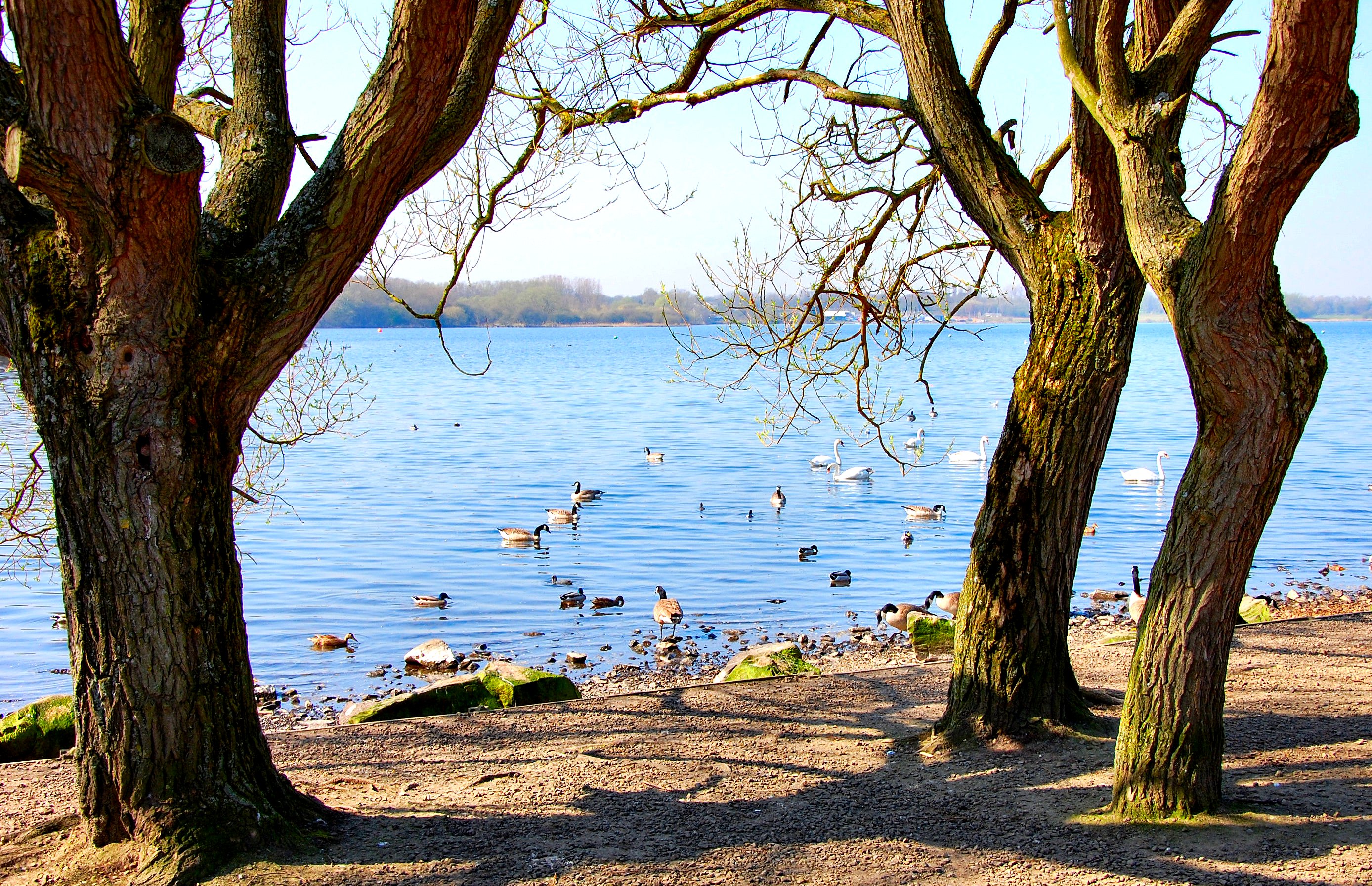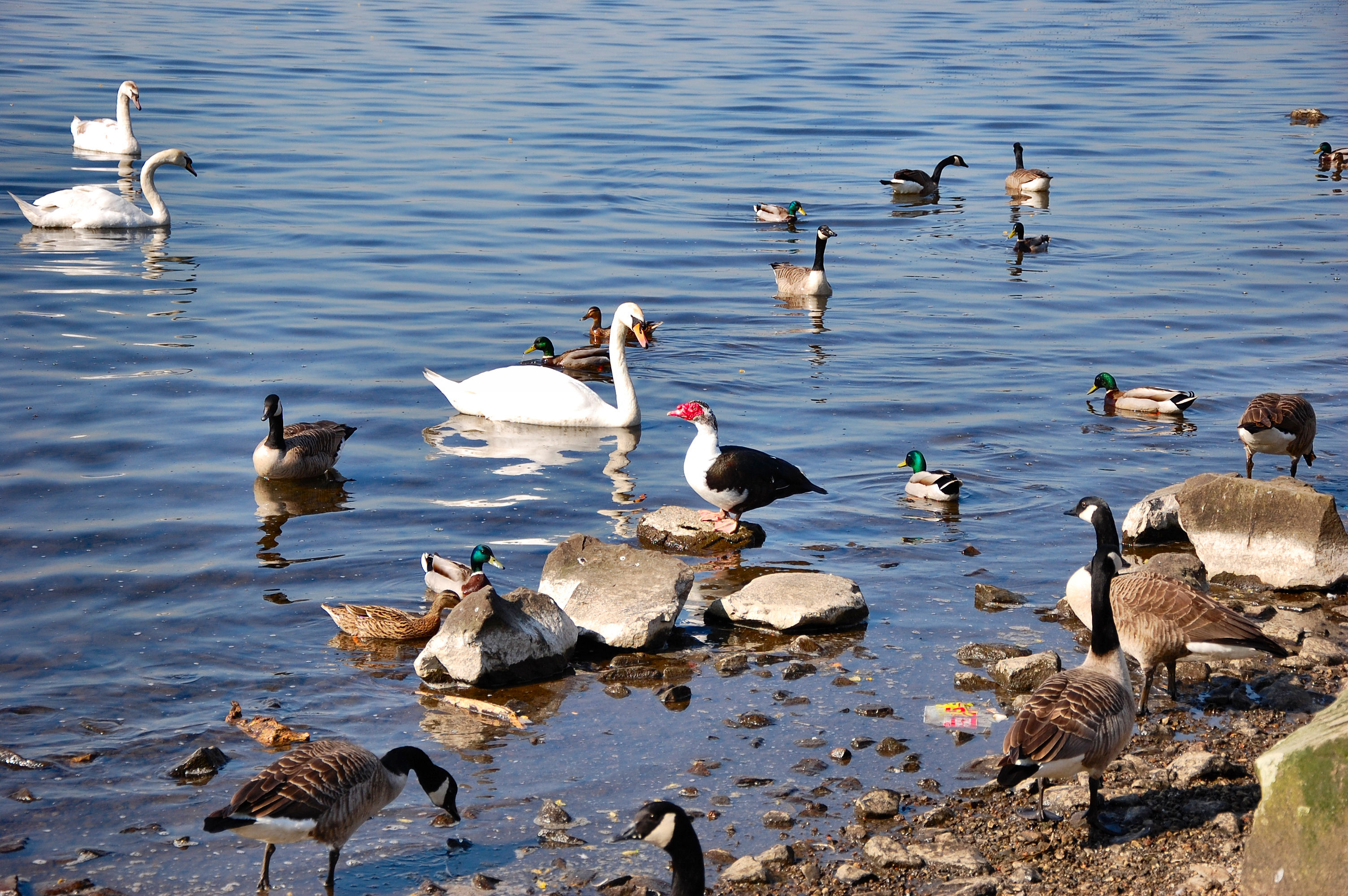Flashes are lakes formed as a result of mining subsidence, an example of how the industrial past has developed into a sanctuary for wildlife. Pennington Flash, in Leigh, Greater Manchester, England is the largest body of open water in the Wigan Borough, fed by the Hey Brook from the west; Pennington Brook exits to the east.[1] The water’s edge has large areas of reed beds and other smaller ponds. The area around the flash has been developed into the Pennington Flash Country Park, which is managed by Wigan Council.
History
Pennington Flash developed in the early 20th century on low-lying flat ground on both sides of the Hey Brook in an area of farmland that was liable to flooding. From the late 19th century coal was mined in vast quantities from deep seams under what has become the flash, and the land slowly subsided. In the early 20th century seasonal flooding became worse and the flash began to form. An area of farmland was abandoned in 1907 and the medieval, moated site of Urmston-in-the-Meadows was abandoned around 1910.[2]
The flash disappeared and reappeared at times during the 1920s, and there was a particularly bad flood in 1923. Bradshaw Leach Farm[a]A station on the Kenyon and Leigh Junction Railway The Kenyon and Leigh Junction Railway (K&LJR) opened on 3 January 1831 linking the Bolton and Leigh Railway (B&LR), which terminated near the Leigh Branch of the Leeds and Liverpool Canal, to the Liverpool and Manchester Railway (L&MR) at Kenyon. is named after Bradshaw Leach Farm. was flooded in 1926. The flash grew in area and depth, but in 1935 Leigh CorporationLocal government district in Lancashire, England, created in 1899 and abolished in 1974. decided to tip colliery spoil into it, with the aim of reclaiming the flash for farming. But tipping for three months had little effect apart from killing the fish. Extensive flooding in 1962 caused severe disruption in the area.[2]
Country park
The flash covers 70 hectares (173 acres) of the 200-hectare country park, which also includes a nature reserve and a nine-hole golf course. Lowton Sailing Club use the flash, and Wigan MBC opened a small visitor centre. The area is rich in wildlife; more than 230 bird species have been recorded at the country park, including black-faced bunting, nightingale, marsh harriers, spoonbills and Leach’s storm petrel.[2] The nature reserve has a number of bird hides and viewing areas, and a network of paths around the lake. Horse riding and angling are permitted in designated areas, and sailing and windsurfing are available at the sailing club.[3]
Notes
| a | A station on the Kenyon and Leigh Junction Railway The Kenyon and Leigh Junction Railway (K&LJR) opened on 3 January 1831 linking the Bolton and Leigh Railway (B&LR), which terminated near the Leigh Branch of the Leeds and Liverpool Canal, to the Liverpool and Manchester Railway (L&MR) at Kenyon. is named after Bradshaw Leach Farm. |
|---|



